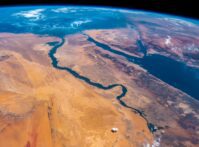-
Northern Myanmar’s Rare Earths Are Shaping Local Power and Global Competition
August 4, 2025 By Amara Thiha
This article is adapted from “Rare Earths and Realpolitik: Kachin Control, Chinese Calculus, and the Future of Mediation in Myanmar,” written by Amara Thiha for the Stimson Center.
As global powers race to secure critical minerals, Myanmar’s rare earths have emerged as both prize and flashpoint. Last week, Reuters reported that the Trump administration has been privately reviewing competing proposals to access Myanmar’s heavy rare earth minerals, including potential engagement with Myanmar’s military junta and direct negotiation with the Kachin Independence Army (KIA), an ethnic armed group that now controls key extraction sites. Since the February 2021 military coup, rare earth mining has surged in northern Kachin State near the Chinese border, where the KIA has seized highly valuable rare earth mines and a critical corridor in the global supply chain. What began as a local insurgency has evolved into resource-backed diplomacy, drawing in China, India, and now the United States.
The KIA Now Governs a Critical Supply Corridor to China
Myanmar has become China’s most important supplier of heavy rare earth elements, making up more than 60 percent of import value each year in recent years, and the KIA is leveraging this dependency for its own legitimacy.
In October 2024, the KIA seized control of Chipwi and Pangwa, two towns near one of the world’s most valuable concentrations of heavy rare earth elements. These materials, particularly dysprosium and terbium, are key to electric vehicle, wind turbine, and advanced defense system production. China responded by closing border gates, halting rare earth shipments from Myanmar.
Negotiations slowly gained momentum in December 2024 after a discreet meeting in Kunming, China, and the KIA began imposing a 20% levy on exported rare earth concentrates. By April, both sides agreed on a fixed rate of 35,000 yuan (USD 4,830) per metric ton. Trade resumed under KIA regulation, formalizing the non-state armed group’s de facto governance of a critical supply corridor.
This development is set against the backdrop of rapid growth in regional rare earth mining and exports. According to ISP-Myanmar, the approximately 130 active mining sites in northern Kachin State in 2020 rose to over 370 by the end of 2024. In Chipwi alone, more than 2,500 leaching pits have been recorded. Between 2017 and 2024, Myanmar exported over 290,000 tons of rare earth material to China, with a total value exceeding USD 4.2 billion, 85% of which was generated after the coup and about one third of which was generated in 2023.
The KIA’s seizure of Chipwi and Pangwa redefined the group’s strategic role: no longer solely a territorial insurgency, the KIA now governs key resource zones, manages export taxation, and negotiates directly with a major regional power, much like it did with jade mining revenues in the mid-1990s to entrench its autonomy and build administrative capacity .
The KIA model is beginning to resemble that of the United Wa State Army (UWSA), which has long controlled tin exports to China. The UWSA utilizes informal taxation, providing stable resource access in exchange for political non-interference. China may tolerate a similar form of armed commerce in Kachin.
However, the UWSA governs a consolidated and politically isolated territory, while the KIA operates in a region with strong Christian influence and diaspora ties. Many Kachin diaspora communities support the National Unity Government, reinforcing the KIA’s linkages with Myanmar’s opposition, transnational advocacy, and democratic agendas. Thus, while the KIA may be a valuable resource partner for China, its political and international affinities may complicate the relationship.
As China Tightens Control, India Eyes Myanmar’s Rare Earths—and Risks
Despite efforts to diversify its supply chains, China remains vulnerable to disruptions in Myanmar. Domestic dysprosium and terbium production is limited by grade and environmental costs. Myanmar’s low labor costs and weak regulation remain commercially attractive, and these structural advantages explain China’s preference for negotiated access over disengagement. Recent investigations by Global Witness, ISP-Myanmar (2024), and regional journalists highlight the rapid growth of extraction sites in Kachin and active cross-border trade flows.
The rare earth standoff has also developed alongside larger geopolitical shifts including escalating US-China trade tensions. China has imposed a series of rare earths measures, including tighter rare earth export restrictions. While peripheral to many outside observers, Myanmar’s northern corridor has become a critical pressure point in US-China trade.
India has taken notice. In December 2024, officials from government-owned Indian Rare Earths Limited visited Kachin to assess upstream partnerships. India could supplement limited domestic reserves, reduce rare earths dependence on China, and offset Chinese influence along India’s border by gaining a foothold in the region. However, while India has initiated limited engagement with ethnic armed groups along the India–Myanmar border, it has not negotiated with non-state armed groups at this depth or scale, particularly in resource governance contexts.
Access to Kachin’s rare earth deposits also comes at a cost. Rare earth mining has caused severe environmental degradation, including deforestation, groundwater contamination, and toxic runoff. Environmental damage from mining has spilled into northern Thailand, and local protests against these threats to livelihoods and land sovereignty also add volatility to resource-driven arrangements.
Can Resource-Backed Diplomacy Bring Stability?
Through control of key rare earth corridors, the KIA has gained not only revenue but leverage. With export volumes near 2023 levels and a 35,000 yuan per ton fixed price, the KIA could generate over USD 200 million annually. Recent interviews with local actors suggest exploratory discussions on a new ceasefire model based on border trade, taxation, and mining, with resource control at the core of political settlement. Rare earths now shape the political landscape of northern Myanmar, where rebel governance, cross-border trade, and great power rivalry are converging. China’s priority is access through engagement. India and others are weighing engaging quasi-state actors against risking exclusion from Southeast Asia’s mineral future.
The KIA’s rise as a gatekeeper of strategic resources redefines the logic of armed legitimacy and mediation. Control over territory and extraction sites creates leverage, reinforcing the perception that China will pragmatically engage with whoever holds power on the ground.
Rare earths have become a double-edged sword. They offer Myanmar a rare entry point into strategic policy discussions in Washington, as illustrated by the Trump administration’s recent meetings. However, whether the United States can feasibly gain access is another matter, and framing Myanmar’s crisis through a narrow lens of rare earth access risks encouraging a transactional rather than strategic response. This could reduce prospects for long-term stability and heighten geopolitical rivalry in contested regions. Rare earths are no longer a subplot in international dynamics; they now sit at the intersection of conflict resolution, international recognition, and geopolitical risk.
Amara Thiha is a Nonresident Fellow with the Stimson Center’s China Program and a doctoral researcher at the Peace Research Institute Oslo (PRIO).
This article was adapted for New Security Beat with support from Nicholas Hawkins, a Research Associate with the Stimson Center’s China Program.
Sources: Centre for Information Resilience, Crisis Group, DW, Global Witness, ISP-Myanmar, Nikkei Asia, Reuters, South China Morning Post.
Photo Credit: Licensed by Adobe Stock.
 A Publication of the Stimson Center.
A Publication of the Stimson Center.







